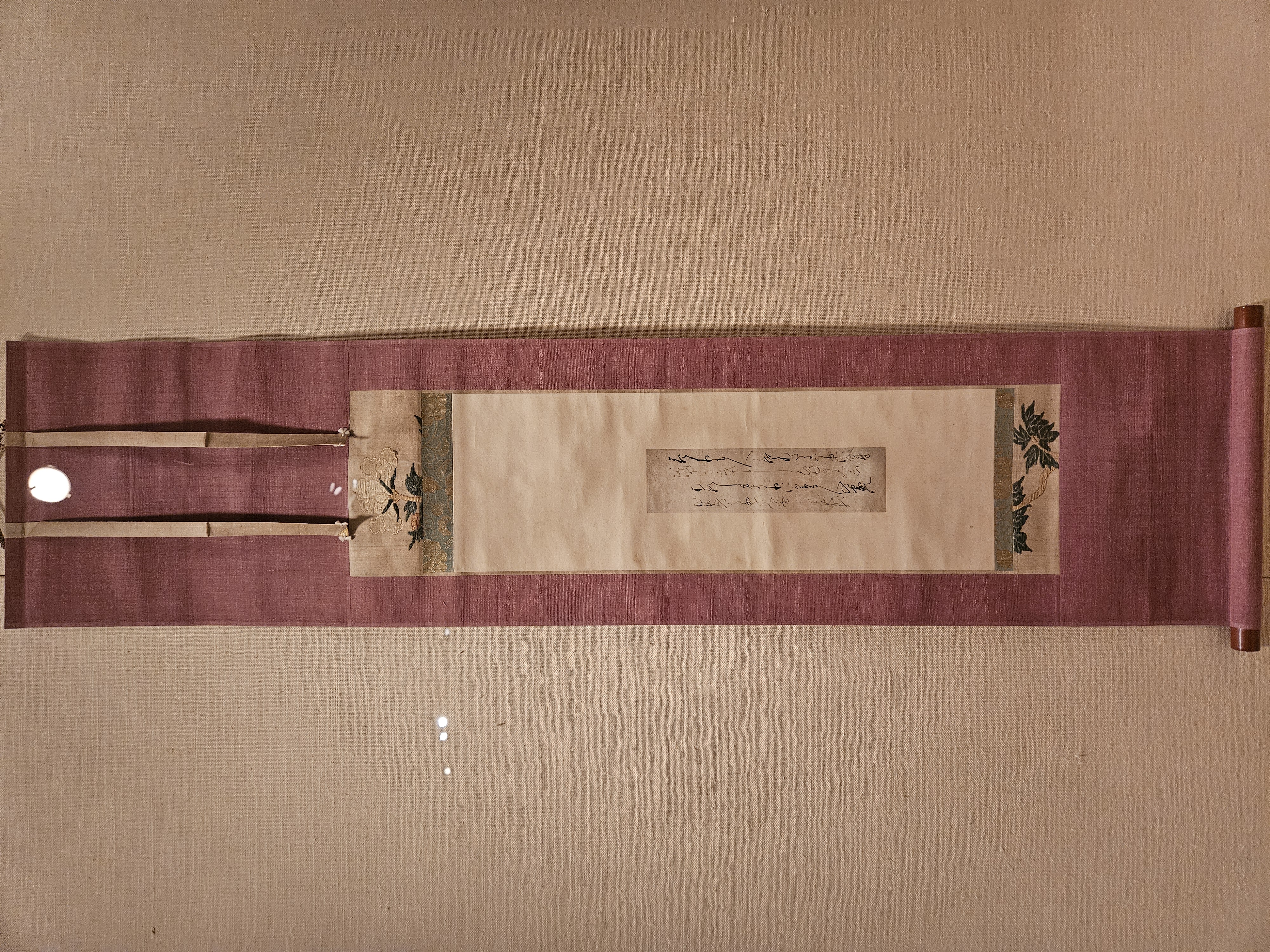
A Poem of Lament, one of the “Uzura Fragments” (Uzura-gire)
Traditionally attributed to Fujiwara Akisuke
Kamakura period, Japan — 13th century
This calligraphic scroll can be examined as the gestalt of two primary elements - the text of the poem and the form of the calligraphy. The poem itself was composed by courtier-poet Ki no Mochiyuki (father of the better known poet Ki no Tsurayuki), who lived during the ninth-century during the prosperous and peaceful Heian period. The Heian period was a golden age for Japanese culture - particularly literary culture - and the composition of poetry was a common pastime for courtiers and other members of the upper classes. In contrast, the calligraphy was produced around four centuries later, in the Kamakura period which was kicked off by a series of civil wars. By the time this scroll was produced, the fighting had finished, but much of the culture of the Kamakura period was defined by the sudden shift from peacetime to warfare, and the need to rebuild afterwards, with a focus on religion - especially Buddhism - and Chinese cultural heritage as the bulwarks of culture to be restored.
This scroll therefore forms an interesting entrypoint into the examination of cultural grief labour - the labour associated with grieving and administering the posthumous needs of an entire way of life rather than a single person. With the aristocracy stripped of its military powers by the warring clans, Kamakura aristocrats took their cultural responsibilities very seriously, with individual households coming to take on the responsibility for different scholarly fields to fill the vacancy of former state-sponsored institutions. Zen monks travelled to China and brought back scriptures which not only helped spread Buddhism throughout Japan, but also introduced bokuseki calligraphy to Japanese artists, spurring the growth in expressionistic calligraphy on display in this scroll.
All this rebuilding work is grief labour, and this particular poem in this particular scroll stands as testament to how even individual, isolated instances of mourning can come from a wider context of grief.
Bibliography
- Lewis, T. T. (2023). Ki no Tsurayuki. In EBSCO Research Starters. https://www.ebsco.com/research-starters/biography/ki-no-tsurayuki
- Heian jidai. (2001). In JAANUS https://www.aisf.or.jp/%7Ejaanus/
- Kamakura jidai. (2001). In JAANUS https://www.aisf.or.jp/%7Ejaanus/
- STEININGER, B., & ブライアン•スタイニンガー. (2018). Manuscript Culture and Chinese Learning in Medieval Kamakura. Harvard Journal of Asiatic Studies, 78(2), 339–369. http://www.jstor.org/stable/45411034
- Varley, P. (2000). The Canons of Medieval Taste. In Japanese Culture: Fourth Edition (pp. 91–139). University of Hawai’i Press. http://www.jstor.org/stable/j.ctt6wqxxp.11